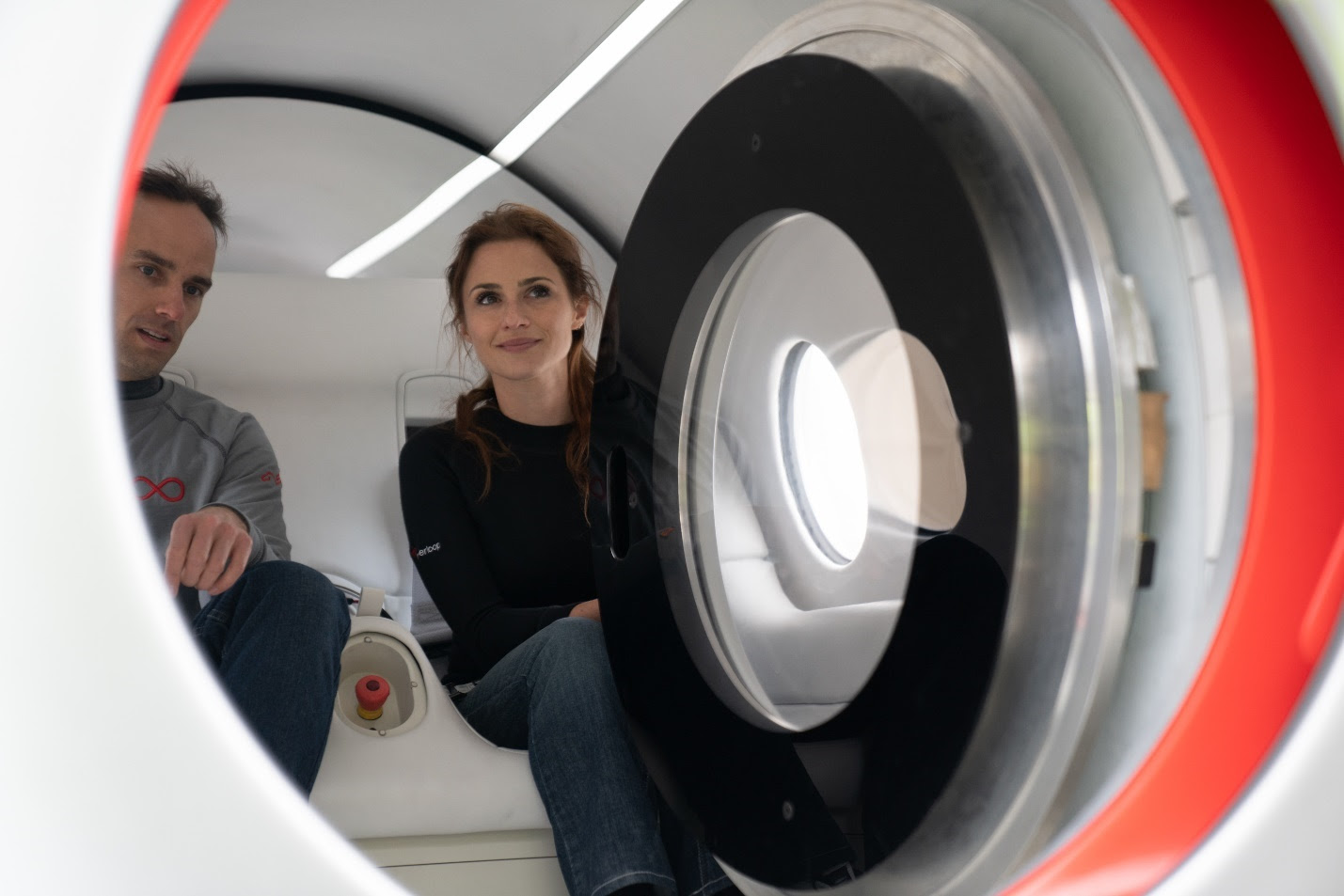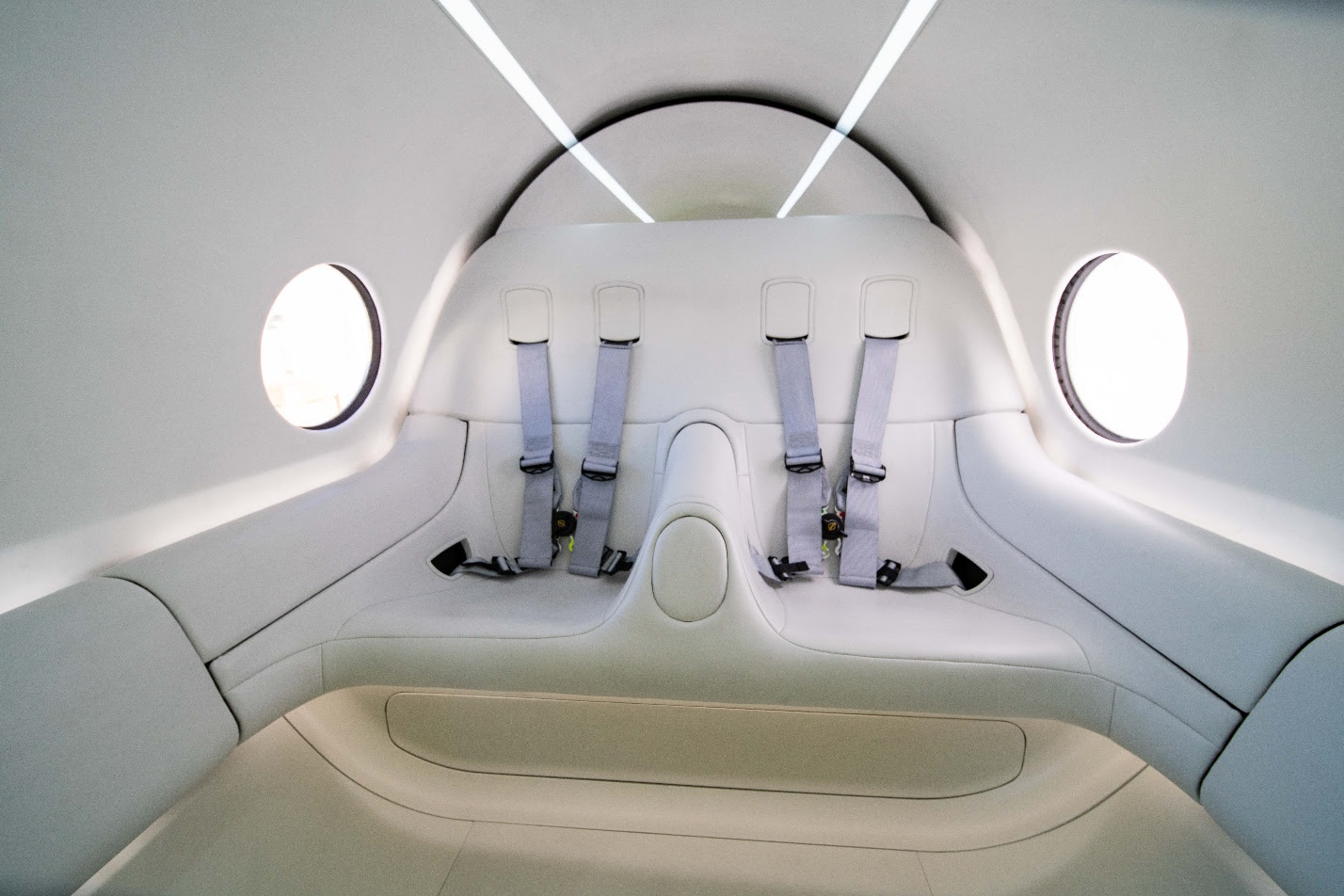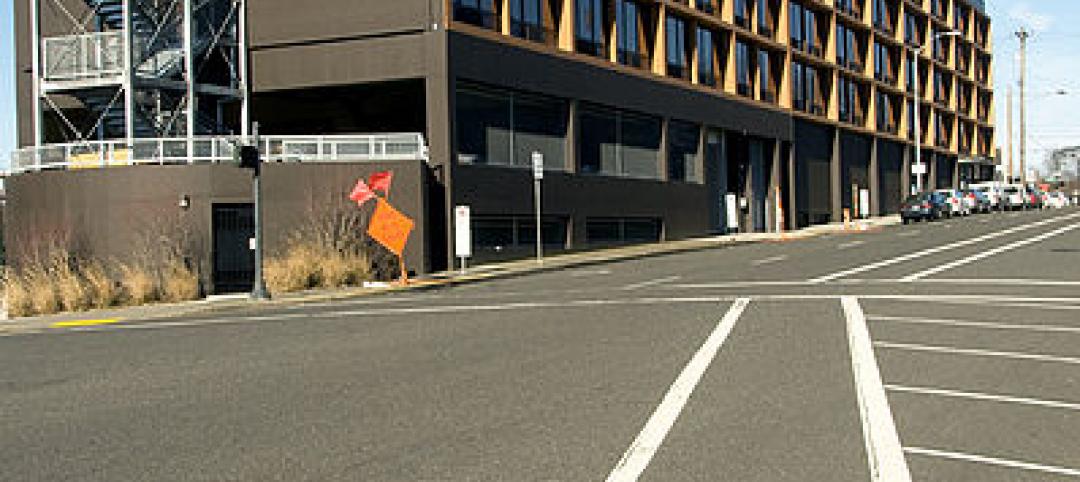After a year of close collaboration between Virgin Hyperloop, Bjarke Ingels Group (BIG), and Kilo Design, the Pegasus Pod has become the first manned and fully functional system for Hyperloop travel after a successful test in the Nevada desert.
BIG and Kilo designed for the pod’s first use case while also defining the design language and characteristics for future Virgin Hyperloop vehicles. The two-seater Pegasus Pod was built to demonstrate that passengers can safely travel in a Hyperloop vehicle. It is equipped with a control system that can detect off-nominal states and rapidly trigger appropriate emergency responses. The six-sm interior has the necessary safety equipment and controls built into the furniture. The production vehicle will be larger and seat up to 28 passengers.

The front scoops of the vessel create natural steps for easy entry and egress, and apertures on the sides of the fairing and on the front door contain a forward-facing window for outward viewing down the tunnel. These features create a link to Pegasus’ external design, where repeating soft forms and pill-shape cutouts are used to highlight depth, layers, and entryways.
Inside, the seating elements and extended arms function as an entry and egress aid, storage for safety equipment, oxygen throughput, and lighting. The seats can also be quickly assembled and disassembled for rear equipment access.

“When designing the future of transportation and the slate is sort of blank, the opportunities are endless. We’ve needed to adjust our way of thinking away from the classic modes of transporting like trains, planes and metros, and towards a new vehicle typology, closest to that of a spaceship,” said Jakob Lange, Partner, BIG, in a release.


Related Stories
| Nov 18, 2014
New tool helps developers, contractors identify geographic risk for construction
The new interactive tool from Aon Risk Solutions provides real-time updates pertaining to the risk climate of municipalities across the U.S.
| Nov 3, 2014
IIT names winners of inaugural Mies Crown Hall Americas Prize
Herzog & de Meuron's iconic 1111 Lincoln Road parking garage in Miami Beach, Fla., is one of two winners of the $50,000 architectural prize.
| Oct 29, 2014
Better guidance for appraising green buildings is steadily emerging
The Appraisal Foundation is striving to improve appraisers’ understanding of green valuation.
| Oct 16, 2014
Henning Larsen Architects to design train station for planned Danish town
Danish firm Henning Larsen Architects won Frederikssung municipality’s architecture competition for a regional train station in the planned city of Vinge—Denmark’s largest urban development.
| Oct 16, 2014
Perkins+Will white paper examines alternatives to flame retardant building materials
The white paper includes a list of 193 flame retardants, including 29 discovered in building and household products, 50 found in the indoor environment, and 33 in human blood, milk, and tissues.
| Oct 12, 2014
AIA 2030 commitment: Five years on, are we any closer to net-zero?
This year marks the fifth anniversary of the American Institute of Architects’ effort to have architecture firms voluntarily pledge net-zero energy design for all their buildings by 2030.
| Oct 3, 2014
New survey tracks Americans’ attitudes towards transit use
A record 10.7 billion rides were taken on public transit in the United States last year. And a national survey of Americans finds that the speed, reliability, and cost, more than any other factors, determine people’s willingness and frequency of use.
| Sep 24, 2014
Architecture billings see continued strength, led by institutional sector
On the heels of recording its strongest pace of growth since 2007, there continues to be an increasing level of demand for design services signaled in the latest Architecture Billings Index.
| Sep 24, 2014
Federal Highway Administration to release design manual for protected bike lanes
The guidelines will cover the pros and cons of different intersection designs and types of protection.
| Sep 22, 2014
4 keys to effective post-occupancy evaluations
Perkins+Will's Janice Barnes covers the four steps that designers should take to create POEs that provide design direction and measure design effectiveness.















